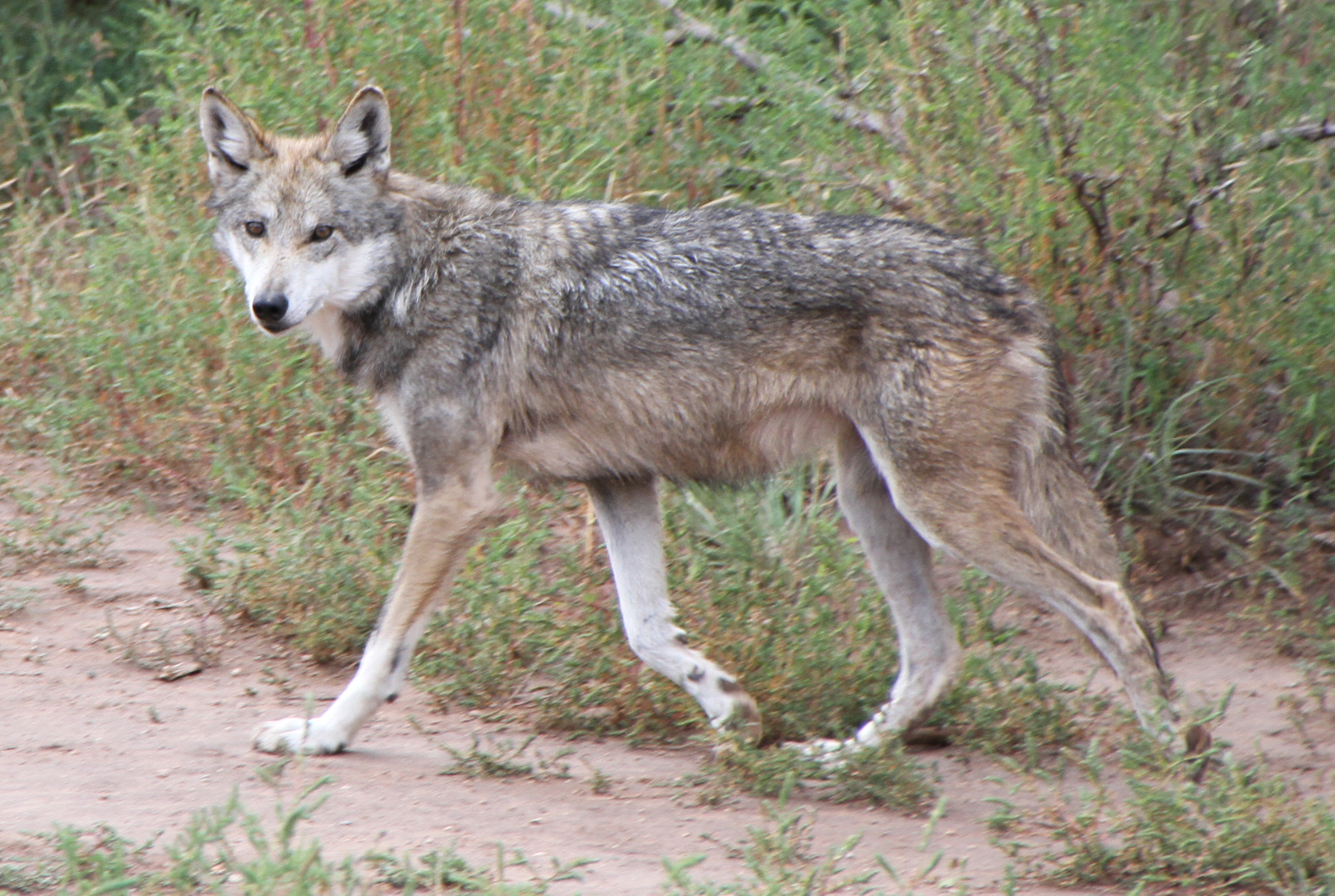Fate of the 2017 Recovery Plan for the Mexican Grey Wolf Unknown as Litigation Continues
- The following is the opinion and analysis of the writer.
- Use of this article or any portions thereof requires written permission of the author.
14910052563_ef62a25b93_o.jpg

The conservation of the Mexican Grey Wolf in the Southwestern United States has been contentious since the US Fish and Wildlife Service (FWS) began writing its first recovery plan for the species in 1982. Now, almost 40 years later, the fight continues over the FWS’ latest recovery plan issued in 2017 (Recovery Plan). Two environmental groups, the Center for Biological Diversity and WildEarth Guardians, filed suit in federal district court, claiming that the Recovery Plan fails to meet the requirements of the Endangered Species Act (ESA) and the Administrative Procedure Act (APA). On March 29, 2019, a federal judge in Arizona ruled that the court lacked jurisdiction to hear all but one of the plaintiffs' claims in both cases. As a result, the case will continue to progress through the judicial system and the fate of the 2017 Recovery Plan remains unknown.
The 2017 Recovery Plan
The latest recovery plan was presented in November 2017 after repeated failed attempts by FWS to implement a plan. The process began in 1982, with new recovery teams organized in 1995, 2003, and 2010, each of which tried to design a suitable plan. The 2017 Recovery Plan focuses on expanding the geographic range of the Mexican Grey Wolf, increasing the population size, improving genetic diversity, monitoring wild populations, implementing adaptive management, and collaborating with partners to address social and economic concerns related to the recovery of the species.
The Plan’s strategy is to establish two populations over a large geographic area. The largest population will be concentrated in Arizona and New Mexico south of Interstate 40, and the other population will be in Mexico, specifically in the Sierra Madre Occidental in Chihuahua and Sonora. In order to improve genetic diversity, FWS will release and translocate Mexican wolves from a captive population to the wild population. All Mexican Grey Wolves are descendants of just seven wolves, which has impaired recovery because of the lack of genetic diversity. The plan aims to increase the mingling of formerly captive wolves and wild wolves.
The Recovery Plan also lays out the criteria for downlisting the Mexican Grey Wolf from endangered to threatened and delisting the wolf entirely.
Downlisting Criteria
|
|
|
Delisting Criteria
| Number of Wolves | Number of Years | Other Population Requirements | Evidence of Gene Diversity | |
|---|---|---|---|---|
| United States | 320 | 8 |
At least 320 wolves in the last 3 years of the 8-year period |
22 released wolves surviving to breeding age |
| Mexico | 200 | 8 | N/A |
22 released wolves surviving to breeding age |
The delisting criteria further require that the States, Tribes, and Mexico have mechanisms in place to prohibit or regulate human-caused mortality of the wolves. At the last annual count, there were 114 Mexican Grey Wolves in the United States, and 30 in Mexico.
The Recovery Plan also lays out monitoring and adaptive management measures. The plan says FWS will use proactive measures to avoid and minimize depredation and will facilitate compensation for the economic impact of wolves on rural ranching communities. FWS acknowledges that wolf-livestock conflicts are the biggest problem facing the recovery of the wolves. There are a number of different solutions that allow ranchers to be compensated for livestock that is taken by wolves. The Farm Bill Livestock Indemnity Program allows ranchers to receive “Livestock Indemnity Payments” of 75% of the market value of the killed, with the valuation calculated the day before the loss occurred. Additionally, the Arizona Livestock Loss Board and the Mexican Wolf/Livestock Council similarly aim to compensate ranchers when they lose livestock to the wolves. The Recovery Plan is an attempt at a compromise between many different interest groups ranging from environmental groups to rancher advocacy groups.
Read the FWS 2017 Mexican Grey Wolf Recovery Plan

Current Litigation
Within two months of the Recovery Plan’s release, the Center for Biological Diversity and WildEarth Guardians filed suit against FWS to invalidate the plan. Both lawsuits say that the plan does not meet the requirements of the ESA and the APA. Plaintiffs allege that FWS violated the ESA by failing to use the best available science, failing to include site-specific management action to address illegal killings of wolves, and allowing for a continued decline in genetic diversity within the wolf population. They also allege that FWS violated the APA because FWS failed to consider all relevant factors and to connect the identified facts to the decisions made in the plan.
On March 29, 2019, a federal judge granted in part and dismissed in part FWS’s motion to dismiss the case. The judge granted the motion to dismiss regarding the citizen-suit provision of the ESA because the plaintiffs had failed to allege specific facts that showed FWS had failed to perform a non-discretionary duty, which means that the citizen-suit provision of the ESA does not apply. Ultimately, recovery plans are non-binding in nature. Additionally, the court found the plaintiffs’ allegations that the FWS plan does not use the best available science and it “arbitrarily and capriciously allows for continued decline in genetic diversity” amount to a disagreement with FWS’s determination as to how best to conserve the Mexican Grey Wolf. The court held that these determinations are within the agency’s discretion and unreviewable under the ESA. Furthermore, the court held that plaintiffs have not stated a claim under the APA because recovery plans are not binding authorities and therefore do not constitute final agency action.
The judge also denied part of FWS’s motion to dismiss and the court will decide on the merits one claim brought by the plaintiffs. The plaintiffs’ claim that the recovery plan “identifies illegal killing as a primary threat affecting recovery” but the plan nonetheless “fails to identify objective measurable criteria or include site-specific management actions to address illegal killings” is within the court’s jurisdiction because the agency failed to address a problem that it itself identified without offering an explanation as to why it was not practicable for the agency to do so. Because the court found jurisdiction, the cases will continue to be litigated.
Section 10(j) Experimental Population Litigation
Spurred by earlier litigation, FWS revised the § 10(j) experimental population rule in 2015. Section 10(j) of the ESA allows the Secretary of Interior to authorize the release of an endangered species outside of that species current range. The 2015 revised rule set a population objective of 300-325 Mexican Grey Wolves within the Mexican Grey Wolf Experimental Population Area (MWEPA). The revised rule also expanded the MWEPA to include all of Arizona and New Mexico south of Interstate 40. Additionally, the revised rule modified the circumstances that allow for a lethal or non-lethal take of a wolf, making it harder to act against a wolf than in the original 1998 § 10(j) rule. Many different interest groups filed suit against FWS because of its revised § 10(j) rule, and on March 30, 2018, a district court judge in Arizona ruled that the revised rule did not comply with the ESA. The court said that the rule only provides for the short-term survival of the Mexican Grey Wolf rather than focusing on the long-term recovery in the wild as required under the ESA. The court also ruled that FWS had to conduct a new essentiality determination because the 2015 rule expanded the release range of the captive wolves beyond their current range. This change requires the FWS to conduct notice-and-comment rulemaking and FWS must make the decision based on the best available science. The new essentiality determination also means that there will be a new public comment period. The court determined that although the 2015 rule is deficient, it will stay in place until FWS makes a new rule so the progress of the wolf populations is not undone. The discussion over the timeline for creating the new rule is ongoing. On April 16, 2019, the court ordered FWS to issue a final, revised § 10(j) rule within the next 25 months. FWS also must submit semi-annual reports to the court and all parties in the lawsuit to show its progress towards finalizing a rule.
Current Challenges
The biggest challenge facing the Mexican Grey Wolf recovery today is death by human. In December 2018, the U.S. Forest Service moved to revoke a New Mexico rancher’s grazing permit after he pled guilty in May 2018 to taking a Mexican Grey Wolf by trapping and hitting it with a shovel. The wolf later died. The rancher killed the wolf in February 2015, but pled guilty in May 2018 and was sentenced to one-year unsupervised probation and $2300 in restitution to the Mexican Grey Wolf Recovery Fund.
The rancher had a permit to graze 50,000 acres of land in the Gila National Forest, and has appealed the agency decision to revoke his permit, which is a process taking up to six months. Grazing permit terms require ranchers to comply with federal laws protecting wildlife and other aspects of the environment. This is the first time that the Forest Service has moved to revoke a rancher’s grazing permit for harming a Mexican Grey Wolf. Environmentalists say the move by the Forest Service shows that the federal government is serious about protecting the Mexican Grey Wolf. Ranching advocates say the move goes too far, especially because the rancher pled to a misdemeanor offense and the permit revocation will seriously undermine the rancher’s livelihood.
This incident highlights the conflict between the economic interests of ranchers and the conservation interests in protecting the Mexican Grey Wolf. The federal government, primarily acting through the FWS, has been tasked with balancing these interests, but its choices also risk making none of the various interest groups happy.

